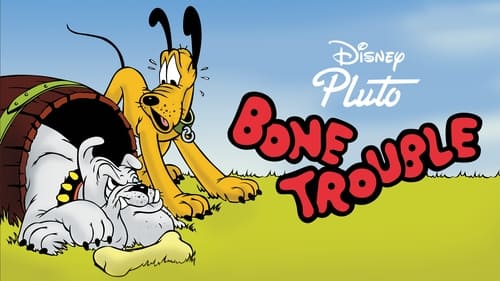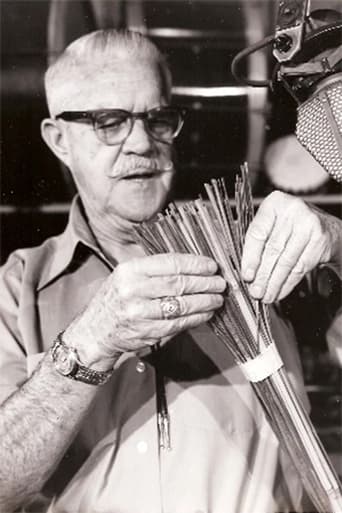Unlimitedia
Sick Product of a Sick System
TaryBiggBall
It was OK. I don't see why everyone loves it so much. It wasn't very smart or deep or well-directed.
Tayyab Torres
Strong acting helps the film overcome an uncertain premise and create characters that hold our attention absolutely.
OllieSuave-007
In one of the earlier Pluto cartoons, Pluto dishes off with Butch after discovering that his own dish is empty. So, he attempts to steal Butch's bone. What results are some hilarious back and forth chases between the two dogs, with some clever and funny sound and musical effects.And, added to the fun is that that the chase scenes lead the dogs to a deserted carnival, where Pluto has some excessive fun with the hall of mirrors.It's too bad Pluto ends up being an antagonist of some sort in this cartoon since it was him he stole Butch's bone in the first place. But then, it's a kid's cartoon. Plenty of laughs for the kids.Grade B-
TheLittleSongbird
The plot is not much and not only is it one that to some extent has been seen before but it starts off a little on the slow side. When Bone Trouble gets to the carnival it is here where it comes to life. The gags, physical and visual-based, work really well. The hall of mirrors sequence is the highlight, and is an extremely clever scene in terms of humour and animation. The reflections he makes and what we see are deliciously bizarre and enough to put anybody into hysterics, possibly one of the most inventive scenes of any Pluto short. Pluto even outsmarts the bulldog who counterpoints him in Bone Trouble, and it's among the craftiest he's been. Pluto is very appealing, he's cute and has a lot of energy, and the bulldog is a good counterpoint for him. The animation is very nicely drawn(if a little more refined later on) and the colours are lovely on the eyes. And the music is lush and characterful, managing also to enhance the action. Overall, very good short and while a little dull to begin with it is among Pluto's better early shorts, mainly because of how good the hall of mirrors sequence is. 8/10 Bethany Cox
rbverhoef
Pluto wakes up in the garden where birds have eaten all of his food. With the aggressive dog next door he sees a fresh bone and he decides to steal it. A chase scene is what follows and when they are entering a carnival, especially the hall of mirrors, some funny images is what we get. Pluto is starting to like it as well and forgets all about the other dog.May be the first half is a little dull with nothing really happening but as soon as Pluto enters the hall of mirrors it becomes very good. Especially the part where he is imitating other animals is great!
Ron Oliver
A Walt Disney PLUTO Cartoon.Pluto has some major BONE TROUBLE when he attempts stealing the delicious comestible from a ferocious Butch next door.This very humorous little film, scripted by the legendary Carl Barks, was the debut for Butch the bully bulldog; he would antagonize the Pup in a number of cartoons through 1950. The excellently animated Hall of Mirrors scene will strike many viewers as a precursor to the somewhat similar `Pink Elephants On Parade' segment in DUMBO (1941).Walt Disney (1901-1966) was always intrigued by pictures & drawings. As a lad in Marceline, Missouri, he sketched farm animals on scraps of paper; later, as an ambulance driver in France during the First World War, he drew comic figures on the sides of his vehicle. Back in Kansas City, along with artist Ub Iwerks, Walt developed a primitive animation studio that provided animated commercials and tiny cartoons for the local movie theaters. Always the innovator, his ALICE IN CARTOONLAND series broke ground in placing a live figure in a cartoon universe. Business reversals sent Disney & Iwerks to Hollywood in 1923, where Walt's older brother Roy became his lifelong business manager & counselor. When a mildly successful series with Oswald The Lucky Rabbit was snatched away by the distributor, the character of Mickey Mouse sprung into Walt's imagination, ensuring Disney's immortality. The happy arrival of sound technology made Mickey's screen debut, STEAMBOAT WILLIE (1928), a tremendous audience success with its use of synchronized music. The SILLY SYMPHONIES soon appeared, and Walt's growing crew of marvelously talented animators were quickly conquering new territory with full color, illusions of depth and radical advancements in personality development, an arena in which Walt's genius was unbeatable. Mickey's feisty, naughty behavior had captured millions of fans, but he was soon to be joined by other animated companions: temperamental Donald Duck, intellectually-challenged Goofy and energetic Pluto. All this was in preparation for Walt's grandest dream - feature length animated films. Against a blizzard of doomsayers, Walt persevered and over the next decades delighted children of all ages with the adventures of Snow White, Pinocchio, Dumbo, Bambi & Peter Pan. Walt never forgot that his fortunes were all started by a mouse, or that childlike simplicity of message and lots of hard work will always pay off.


